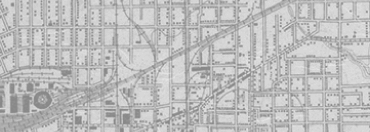


Back
D. V. Harkness Oral History
Videotaped oral history interview with D.V. Harkness. A Dallas police sergeant, Harkness supervised the motorcade route from Main and Field streets to Elm and Houston streets. After witnessing the assassination, he was assigned to search boxcars in the rail yard, where he helped arrest three apparent tramps who have since become controversial figures in the assassination story.Interview conducted at The Sixth Floor Museum at Dealey Plaza on June 29, 2006 by Stephen Fagin. The interview is one hour and one minute long.
D. V. Harkness Oral History
06/29/2006
Hi-8 videotape
61 Minutes
Oral History Collection/The Sixth Floor Museum at Dealey Plaza
2006.001.0037
Mr. Harkness passed away on April 4, 2007. - Stephen Fagin, Associate Curator
"The Three Tramps" has become one of the most pervasive conspiracy theories in the history of the Kennedy assassination....and it was thoroughly discredited in the late 1980s.Nearly two hours after the assassination, Dallas Police officer D.V. Harkness arrested three vagrants in a railroad car just south of Dealey Plaza. Harkness, Marvin Wise, and Billy Bass escorted the men through Dealey Plaza where they were photographed by George Smith of the Fort Worth Star-Telegram, Jack Beers of the Dallas Morning News, and William Allen of the Dallas Times Herald. The pictures were never published, but researcher Richard Sprague obtained prints of some of them in the mid-60s and speculated the men and their arrest were suspicious, mostly because there was no reference to the event by the Warren Commission. In the Watergate era of the 70s, some researchers noticed a similarity between two of the Watergate burglars, Frank Sturgis and E. Howard Hunt, both of whom were connected to the CIA. In later years, researchers noticed the men resembled other bad guys such as actor Woody Harrelson's convicted hit man father, Charles.Then in 1989, city of Dallas archivist Cindy Smolovik located and made available Dallas Police records from the 1960s and among them were the three tramps' arrest records. Texas researcher Mary LaFontaine noticed the documents two years later. The men were Charles Gedney, Gus Abrams, and Harold Doyle. Abrams was deceased by then but the other two were quickly found and they, along with Abrams' sister, confirmed their arrest and real identities: tramps, just trying to ride the rails west after spending the night in a shelter and cleaning up on the morning of the assassination. The men were jailed that afternoon and released the following Monday. Since they were never connected to the Kennedy assassination, the arrest records were not forwarded to other investigators and that is why no one knew about the tramps for more than 25 years. - Gary Mack, Curator

D. V. Harkness Oral History
Videotaped oral history interview with D.V. Harkness. A Dallas police sergeant, Harkness supervised the motorcade route from Main and Field streets to Elm and Houston streets. After witnessing the assassination, he was assigned to search boxcars in the rail yard, where he helped arrest three apparent tramps who have since become controversial figures in the assassination story.Interview conducted at The Sixth Floor Museum at Dealey Plaza on June 29, 2006 by Stephen Fagin. The interview is one hour and one minute long.
D. V. Harkness Oral History
06/29/2006
Police
Motorcade
Main Street
Elm Street
Houston Street
Eyewitnesses
The three tramps
Railyard
Suspects
Oral histories
Harkness, D. V.
Dallas Police Department
Dallas
Law Enforcement (OHC)
Dealey Plaza Eyewitnesses (OHC)
Rail Yards in Dealey Plaza (OHC)
Hi-8 videotape
61 Minutes
Oral History Collection/The Sixth Floor Museum at Dealey Plaza
2006.001.0037
Mr. Harkness passed away on April 4, 2007. - Stephen Fagin, Associate Curator
"The Three Tramps" has become one of the most pervasive conspiracy theories in the history of the Kennedy assassination....and it was thoroughly discredited in the late 1980s.Nearly two hours after the assassination, Dallas Police officer D.V. Harkness arrested three vagrants in a railroad car just south of Dealey Plaza. Harkness, Marvin Wise, and Billy Bass escorted the men through Dealey Plaza where they were photographed by George Smith of the Fort Worth Star-Telegram, Jack Beers of the Dallas Morning News, and William Allen of the Dallas Times Herald. The pictures were never published, but researcher Richard Sprague obtained prints of some of them in the mid-60s and speculated the men and their arrest were suspicious, mostly because there was no reference to the event by the Warren Commission. In the Watergate era of the 70s, some researchers noticed a similarity between two of the Watergate burglars, Frank Sturgis and E. Howard Hunt, both of whom were connected to the CIA. In later years, researchers noticed the men resembled other bad guys such as actor Woody Harrelson's convicted hit man father, Charles.Then in 1989, city of Dallas archivist Cindy Smolovik located and made available Dallas Police records from the 1960s and among them were the three tramps' arrest records. Texas researcher Mary LaFontaine noticed the documents two years later. The men were Charles Gedney, Gus Abrams, and Harold Doyle. Abrams was deceased by then but the other two were quickly found and they, along with Abrams' sister, confirmed their arrest and real identities: tramps, just trying to ride the rails west after spending the night in a shelter and cleaning up on the morning of the assassination. The men were jailed that afternoon and released the following Monday. Since they were never connected to the Kennedy assassination, the arrest records were not forwarded to other investigators and that is why no one knew about the tramps for more than 25 years. - Gary Mack, Curator








